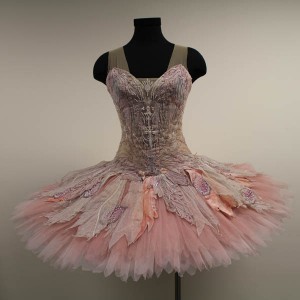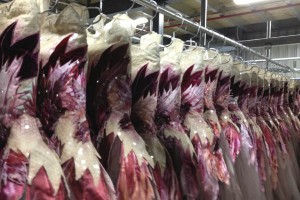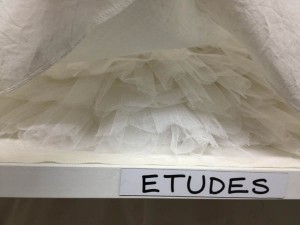 The Australian Ballet celebrated its 50th anniversary as Australia’s premier ballet company in 2012. That same year, The Australian Government awarded a federal grant to The Australian Ballet for the fit out of the Australian Ballet Production Centre in Melbourne’s western suburbs. Part of this grant was allocated towards the development of a collection management system to support the management its collection of costumes, props and scenery. The collection consists of approximately 30 000 costumes, and scenery and props for a hundred Productions.
The Australian Ballet celebrated its 50th anniversary as Australia’s premier ballet company in 2012. That same year, The Australian Government awarded a federal grant to The Australian Ballet for the fit out of the Australian Ballet Production Centre in Melbourne’s western suburbs. Part of this grant was allocated towards the development of a collection management system to support the management its collection of costumes, props and scenery. The collection consists of approximately 30 000 costumes, and scenery and props for a hundred Productions.
Collection management systems are the norm in the visual arts and heritage sectors, however this type of program has not been implemented previously in the performing arts. This project recognises that the collections of the Australian Ballet are fundamental to realising the company’s artistic vision. The collections are also significant to Australia’s cultural heritage.
There has been no central database of information relating to the collections and a significant degree of corporate knowledge about the collections is held by key people. Information related to the collections is also held in a variety of different file formats and in a variety of places. Finding where the information was kept proved to be the biggest initial challenge. I had decided early on that I wanted to implement a Vernon CMS for this project due to its ability to be customised to suit a variety of different collections.
 In January 2015 we commenced entering data about our costumes into Vernon. Due to the ad hoc nature of existing record keeping, we are following a method of extensive data tidy and conversion into Excel spreadsheets. We then prepare and run XML imports. To date we have 18,000 records in Vernon. These are predominantly object records, but we are also building a comprehensive Person and Event database within the Cataloguing Module. One of the ways that we have customised our Person records is we now have the capacity to add very detailed measurement data about our dancers.
In January 2015 we commenced entering data about our costumes into Vernon. Due to the ad hoc nature of existing record keeping, we are following a method of extensive data tidy and conversion into Excel spreadsheets. We then prepare and run XML imports. To date we have 18,000 records in Vernon. These are predominantly object records, but we are also building a comprehensive Person and Event database within the Cataloguing Module. One of the ways that we have customised our Person records is we now have the capacity to add very detailed measurement data about our dancers.
 In addition to the multitude of challenges presented by the nature of the existing data, there is also the added challenge that these collections are active assets, which is they are used in Australian Ballet Productions, within Australia and for overseas tours. This not only impacts on the level of access we have to the objects, but changes are being made constantly when costumes and shows are refurbished and restaged, which means our data can very quickly become inaccurate. They are also subject to the rigours of production, stage lights, sweat, frequent transport, and physical stress. It is an endlessly fascinating and challenging project and certainly of great benefit to all of the stakeholders, including the Australian public.
In addition to the multitude of challenges presented by the nature of the existing data, there is also the added challenge that these collections are active assets, which is they are used in Australian Ballet Productions, within Australia and for overseas tours. This not only impacts on the level of access we have to the objects, but changes are being made constantly when costumes and shows are refurbished and restaged, which means our data can very quickly become inaccurate. They are also subject to the rigours of production, stage lights, sweat, frequent transport, and physical stress. It is an endlessly fascinating and challenging project and certainly of great benefit to all of the stakeholders, including the Australian public.
Rebecca Tripp
Project Manager
The Australian Ballet